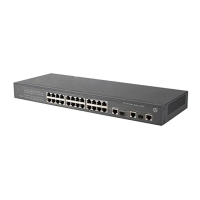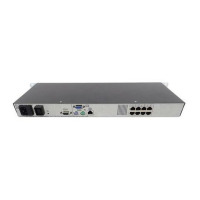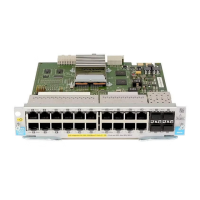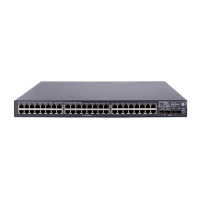178
Organizationally specific TLVs and LLDP-MED TLVs are used for enhanced device management.
They are defined by standardization or other organizations and are optional for LLDPDUs.
• Basic management TLVs
Table 23 li
sts the basic management TLV types. Some of them are mandatory to LLDPDUs.
Table 23 Basic management TLVs
Type Description Remarks
Chassis ID Specifies the bridge MAC address of the sending device.
Mandatory
Port ID
Specifies the ID of the sending port:
• If the LLDPDU carries LLDP-MED TLVs, the port ID TLV
carries the MAC address of the sending port.
• If the LLDPDU carries no LLDP-MED TLVs, the port ID TLV
carries the port name.
Time To Live
Specifies the life of the transmitted information on the receiving
device.
End of LLDPDU Marks the end of the TLV sequence in the LLDPDU.
Port Description Specifies the description of the sending port.
Optional
System Name Specifies the assigned name of the sending device.
System Description Specifies the description of the sending device.
System Capabilities
Identifies the primary functions of the sending device and the
enabled primary functions.
Management Address
Specifies the following elements:
• The management address of the local device.
• The interface number and object identifier (OID) associated
with the address.
• IEEE 802.1 organizationally specific TLVs
Table 24 IEEE 802.1 organizationally specific TLVs
Type Description
Port VLAN ID
Specifies the port VLAN identifier (PVID). An LLDP frame carries only one
TLV of this type.
Port And Protocol VLAN ID
Indicates whether the device supports protocol VLANs and, if so, what
VLAN IDs these protocols will be associated with. An LLDPDU can carry
multiple different TLVs of this type.
VLAN Name
Specifies the textual name of any VLAN to which the port belongs. An LLDP
frame can carry multiple different TLVs of this type.
Protocol Identity
Indicates protocols supported on the port. An LLDPDU can carry multiple
different TLVs of this type.
NOTE:
HPE devices support only receiving protocol identity TLVs.
• IEEE 802.3 organizationally specific TLVs

